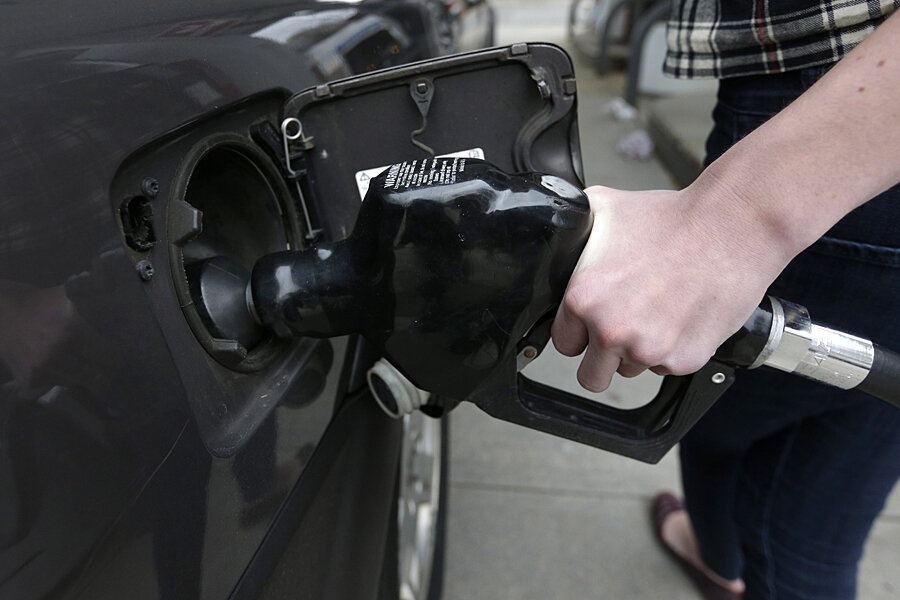Oil prices at two-year low. Why OPEC might change that.
Loading...
Oil prices may have gone as low as OPEC is willing to tolerate.
After several months of price declines, the secretary-general of the Organization of Petroleum Exporting Countries (OPEC) says the group may cut its production target for 2015 because of an abundance of supply.
The oil cartel accounts for around 40 percent of the world’s oil supply, and although its influence has diminished in recent years as oil output has risen -- from the United States in particular -- the organization can still significantly impact the price of crude if it wants to. (Related: Low Demand, Increased Supply Conspire To Push Crude Prices Lower)
With weak demand and a flood of American oil hitting the markets, prices have dropped to their lowest levels in over two years.
And it appears that the price slide has gone too far for OPEC. OPEC’s Secretary-General Abdalla El-Badri said the group could slash its production target – the collective output of the 12-member group – to 29.5 million barrels per day (bpd) in 2015, down 500,000 bpd from its previous target.
“Our production will be maybe 29.5 million barrels per day in 2015, not 30 million barrels,” at OPEC headquarters in Vienna on Sept. 16. But he added, “This is an outlook, not a decision.”
WTI and Brent prices have each dropped about 13 percent since June. Investors have been bearish on crude due to weak demand and a global supply that is expected to continue to climb. Saudi Arabia didn’t make much news when it cut back by 400,000 bpd in August.
But El-Badri’s statement hinting at an official revision in OPEC’s production target woke up oil traders. The two benchmarks clawed back immediately after his comments – WTI gained almost $2 to just below $95 per barrel in intraday trading, or a more than 2 percent increase. Brent jumped by 1.22 percent, closing in on the $100 per barrel mark.
That’s because the statement is the first indication in quite some time that OPEC would officially move to stop a continued slide in prices.
What is more intriguing is the exact price level that triggered concern on behalf of OPEC’s leaders. Once upon a time, oil trading around $100 per barrel was extremely expensive. But OPEC has become used to Brent crude trading well above those levels, which it has done almost constantly since early 2011.
Why have OPEC’s expectations changed? Part of the reason is that the marginal cost of producing a barrel of oil is rising. As easy-to-get oil depletes, oil companies are left with more expensive oil, so the cost of production rises.
But for OPEC, it has more to do with balancing their budgets. The biggest change since the era of lower prices was the Arab Spring, which led to substantial unrest. In response, oil producing countries in the Middle East decided to significantly increase social spending in order to keep their populaces happy. Now, need a much higher price to balance their books.
Before that point – throughout most of 2010, for example – Brent was only selling for between $70 and $85 per barrel. That is around 15 to 30 percent lower than today’s prices. But at the time, OPEC was entirely content with those levels. They repeatedly left the group’s production target steady, even during what seemed like a period of relatively cheap prices (by today’s standards). (Related: Bad Has Never Looked So Good)
And that is just it. Today, $100 per barrel is considered “cheap.” But four years ago, the group aimed for oil to stay between $70 and $80 per barrel. When Brent hit $82, Kuwait’s oil minister said that was “fantastic.”
That means there could be a permanent floor beneath oil prices at somewhere in the mid-$90 per barrel range. OPEC’s members cannot sustain prices any lower than that, so it will slash production in order to avoid ever going back to the days of oil selling between $70 and $80 per barrel.
More Top Reads From Oilprice.com:
- Why Peak Oil Refuses To Die
- Obama’s Oil Boom – Global Warming Be Damned
- Surge In U.S. Oil Production Finally Reflected At Pump
Source: http://oilprice.com/Energy/Oil-Prices/OPEC-Hints-It-May-Act-To-Stop-Oil-Price-Slide.html





